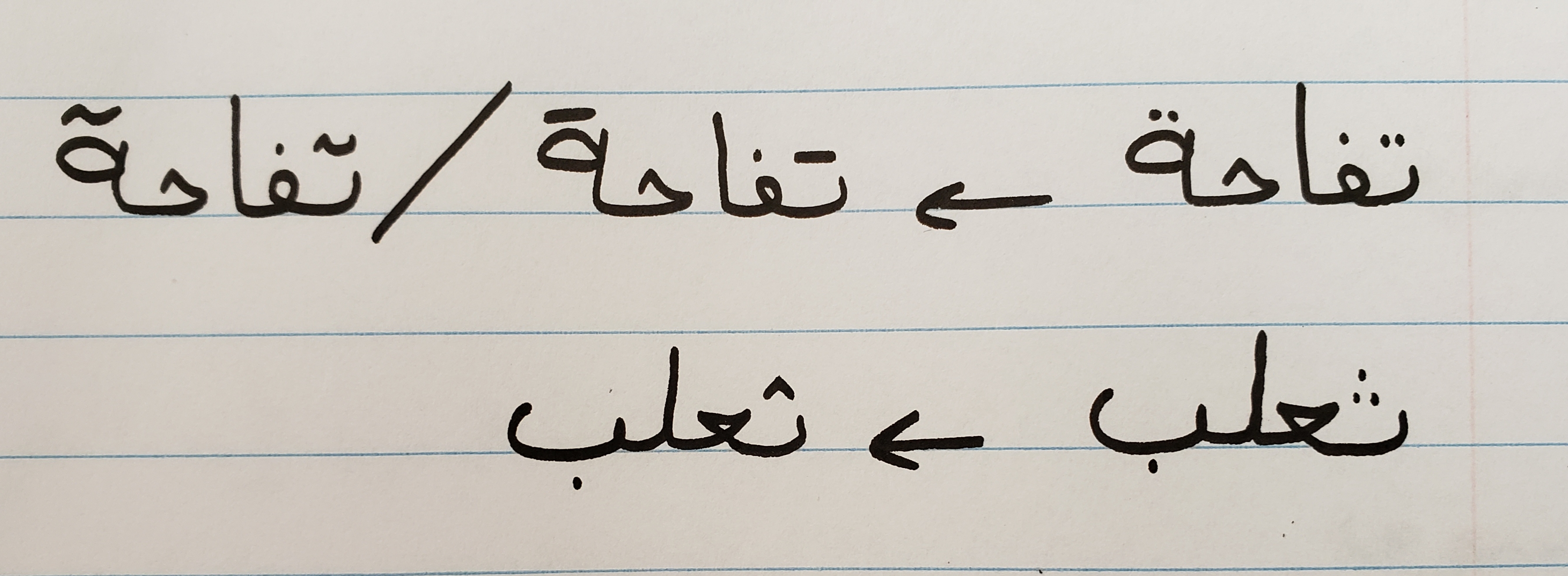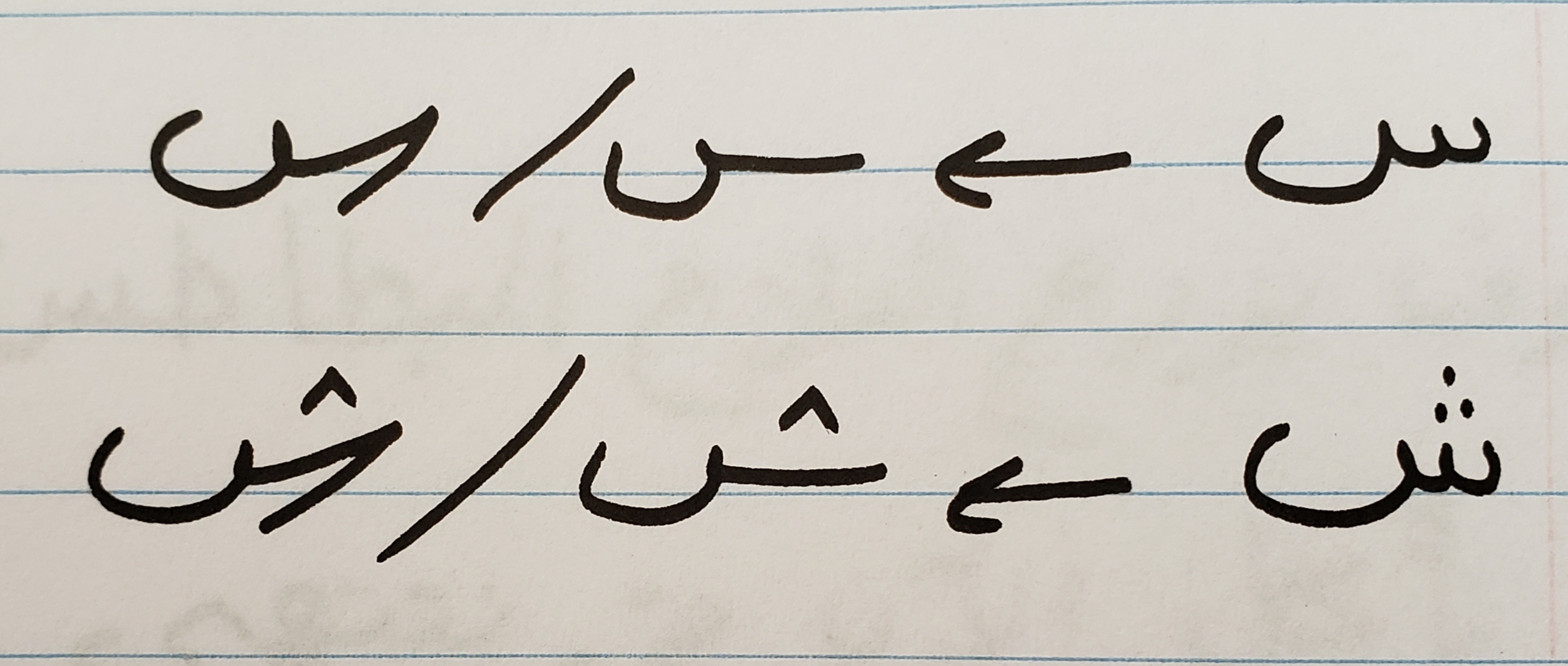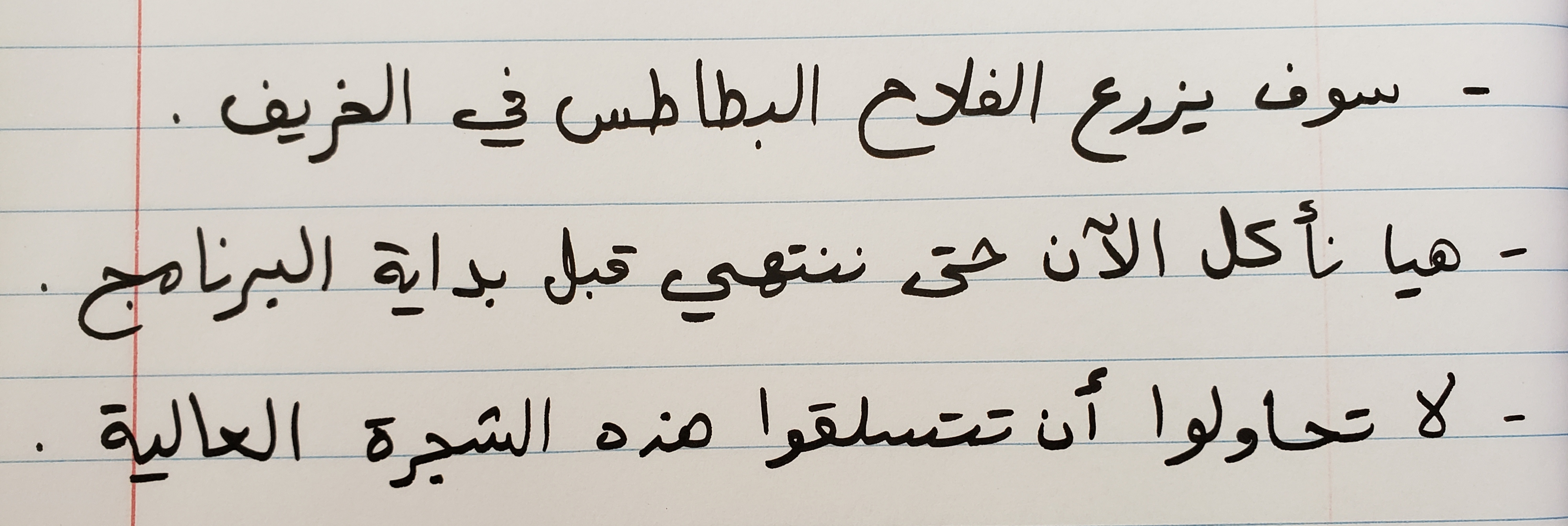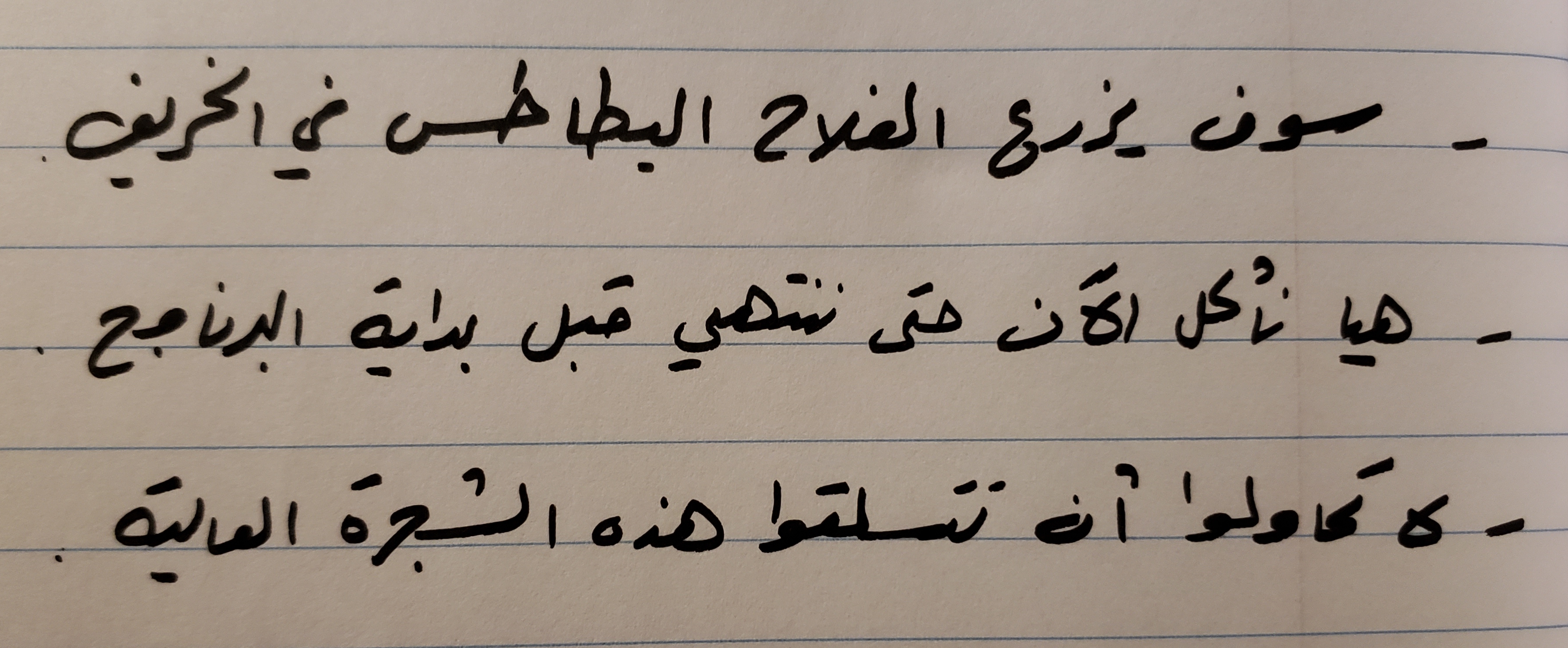Everyday Arabic Handwriting Posted by yasmine on Sep 18, 2019 in Arabic Language
As an Arabic learner, you are probably accustomed to reading printed Arabic and Arabic handwriting خَط اليَد that is written in a way that is legible مَقروء for learners. Not to be confused with Arabic calligraphy الخَط العربي, which is an art form meant for decorating and sacred scripture. In this post, we’ll be looking at everyday Arabic handwriting by native speakers and point out some differences between printed Arabic and Arabic handwriting.
Just like in any language, people develop their own style of writing أُسلوب كِتابة. But there are a few main patterns which distinguish handwritten from printed مَطبوع . This way of writing is of course, mainly for speed السُّرعة .
Replacing dots:
Almost all native speakers replace two dots with a straight line “–“ or a “~” and replace three dots with “^” .
No diacritics or short vowels:
Since native speakers know how words are pronounced, there is no point wasting time including diacritics for most everyday notes and writing. Children in early grade school are encouraged to copy the printed form. They include the short vowels and dots separated as they show in printed form.
Ways of writing certain letters:
There are certain Arabic writing styles such as the “Naskh” style and the “Ruq’ah” style which are used for calligraphy but have also led to endless variations in people’s handwriting. For example:
Ways to right the letter “س” and “ش”:
Some people like to make these two letters look like a straight line with a tail or one line going up then across with a tail like so:
Writing the letter “ه”:
When the letter “ه” comes in the middle of a word, it usually looks like an English number “8”, like in the name “مها”, but some people like to write it looking almost like the English letter “v” like so:
Note: Most native speakers will write in Modern Standard Arabic (MSA) even if what is written would be said in dialect due to MSA being considered the formal written form of Arabic. Typing on social media is another matter. As I mentioned in a previous post, you will find MSA, dialect, and Arabizi.
Here are a number of sentences in MSA which I have written in my handwriting and asked a friend to do the same in order to show the differences in styles.
.سَوْفَ يَزْرَع الفَلاح البَطاطِس في الخَريف
The farmer will plant potatoes in the Fall.
.هَيا نأكُل الآن حتى نَنْتَهِي قَبْلَ بِداية البَرْنامِج
Let’s eat now so that we can finish before the start of the program.
.لا تُحاوِلوا أن تتسلَّقوا هذِهِ الشَّجَرة العالية
Don’t (plural) try to climb this tall tree.
So next time you come across a note, list, recipe, address, etc. written in Arabic don’t be intimidated, you can make it out! ✍?✏??

Build vocabulary, practice pronunciation, and more with Transparent Language Online. Available anytime, anywhere, on any device.









Comments:
Robert Campabba:
Yasmine,
I love your blog, but I wish you would transliterate the Arabic words and sentences into English for the benefit of those of us who beginners.
Keep up the good work!
Nabeeha Shaikh:
your blog is the best Arabic blog i ever came across.. really amazing !!!!!!
Maria:
Hi, I love your blog. I am currently learning arabic and this is amazing and so helpful. Would i be able to request if you’d be able to do another handwriting post, as I’ve been writing the formal way and really am keen to learn to write like how you did on this post “everyday handwriting”